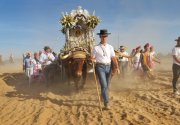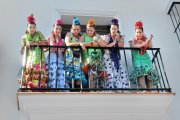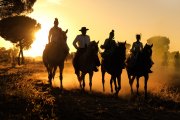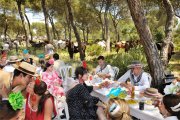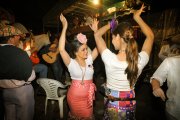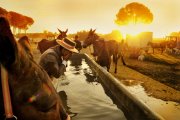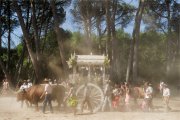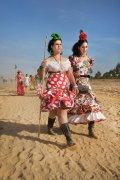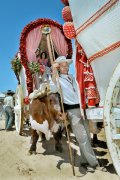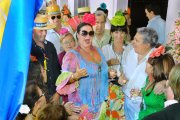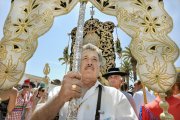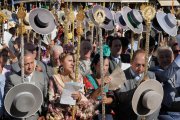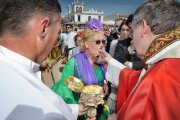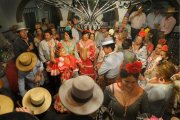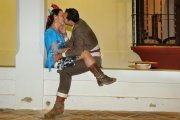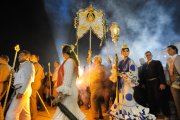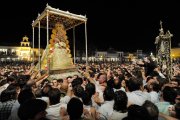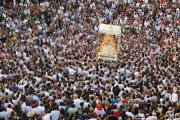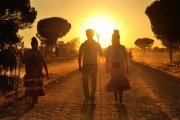Pilgrimage to El Rocio
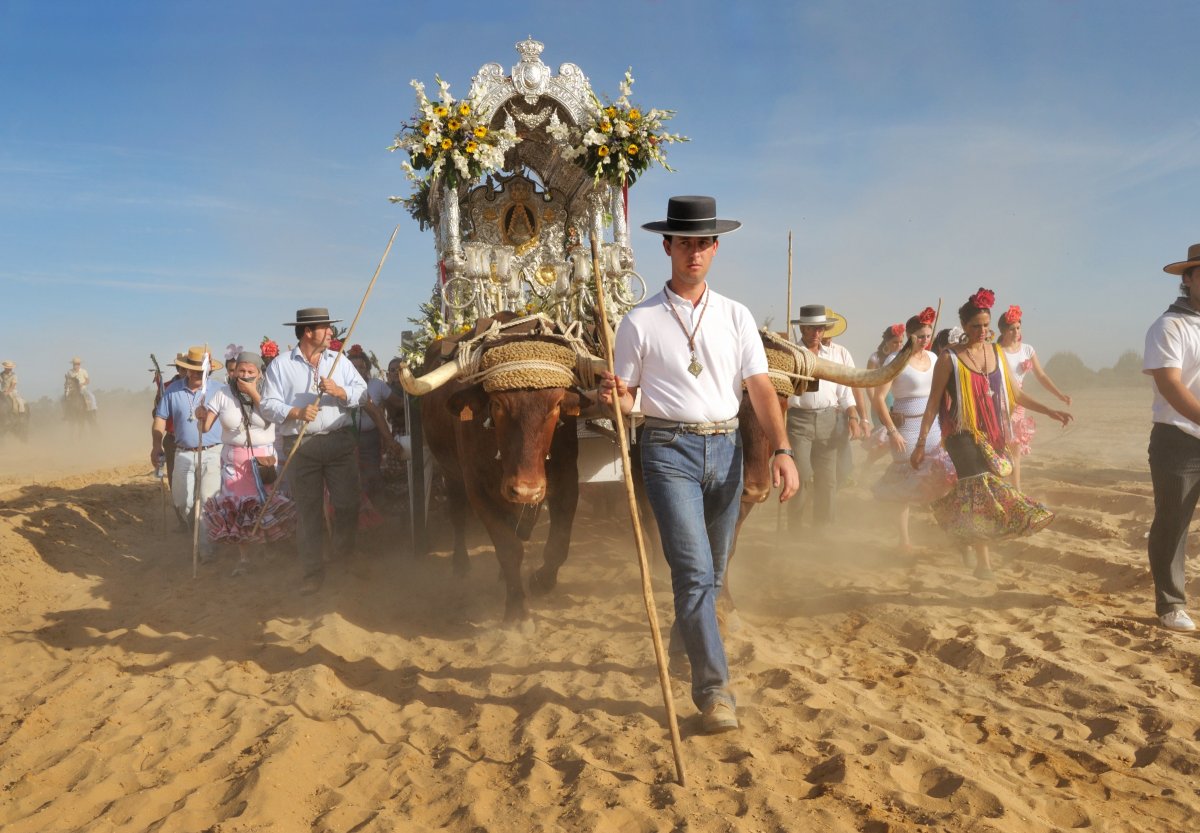
Spain, Camino de Moguer
25.05.2012
Members of the Brotherhood of Moguer on their way to El Rocio to pay homage to the Blessed Virgin of El Rocio. The cart drawn by oxen with the image of the Virgin is the centre of each fraternity on the pilgrimage to El Rocio.
More about this projectBack to overview
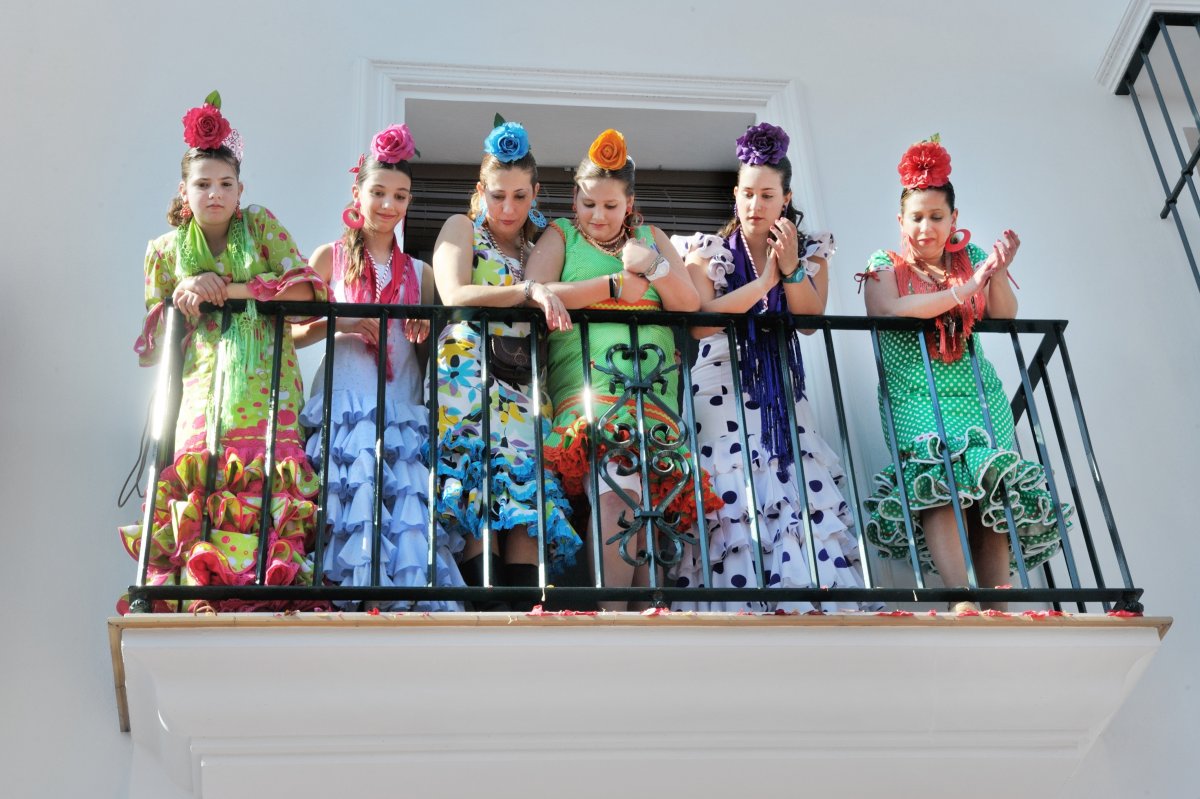
Spain, Moguer
24.05.2012
The move from the village of Moguer to El Rocio is a folk festival. Many inhabitants line the streets and wish the pilgrims a good journey. Girls in flamenco dresses follow the events from the balcony.
More about this projectBack to overview
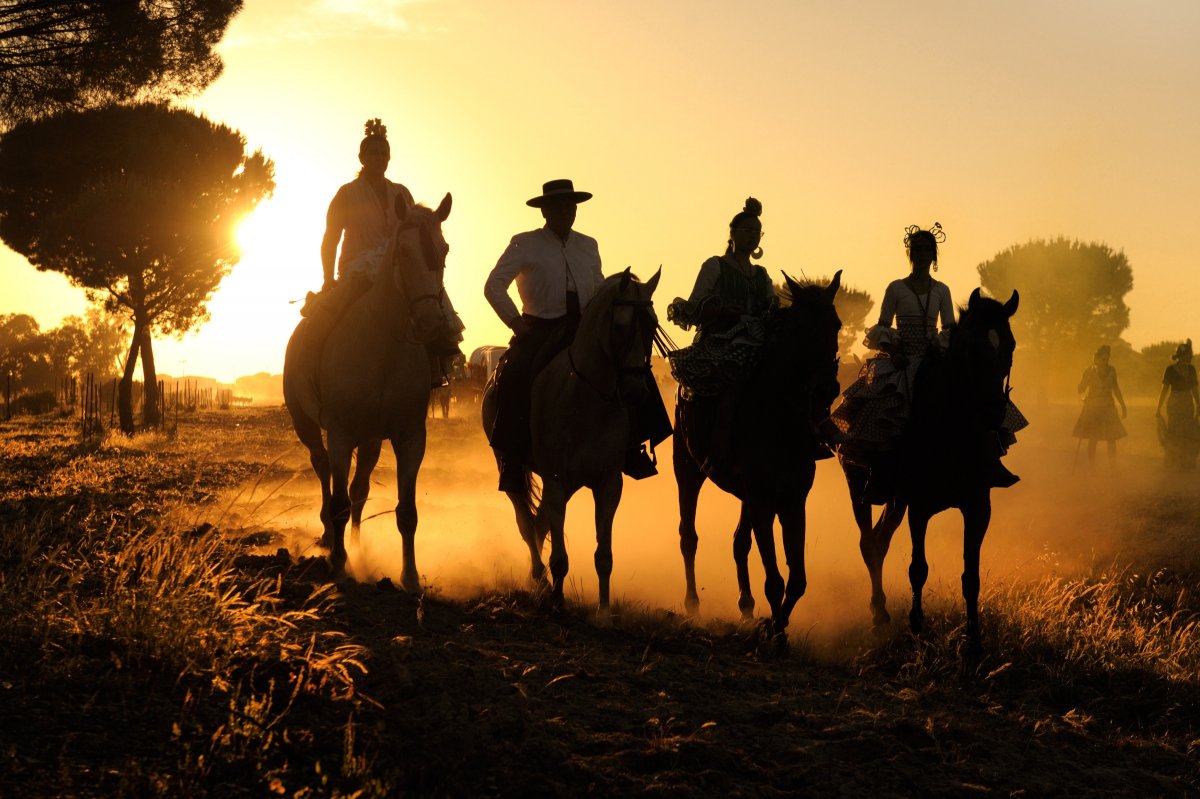
Spain, Camino de Moguer
24.05.2012
Riding pilgrims at sunset on the Camino de Moguer.
More about this projectBack to overview
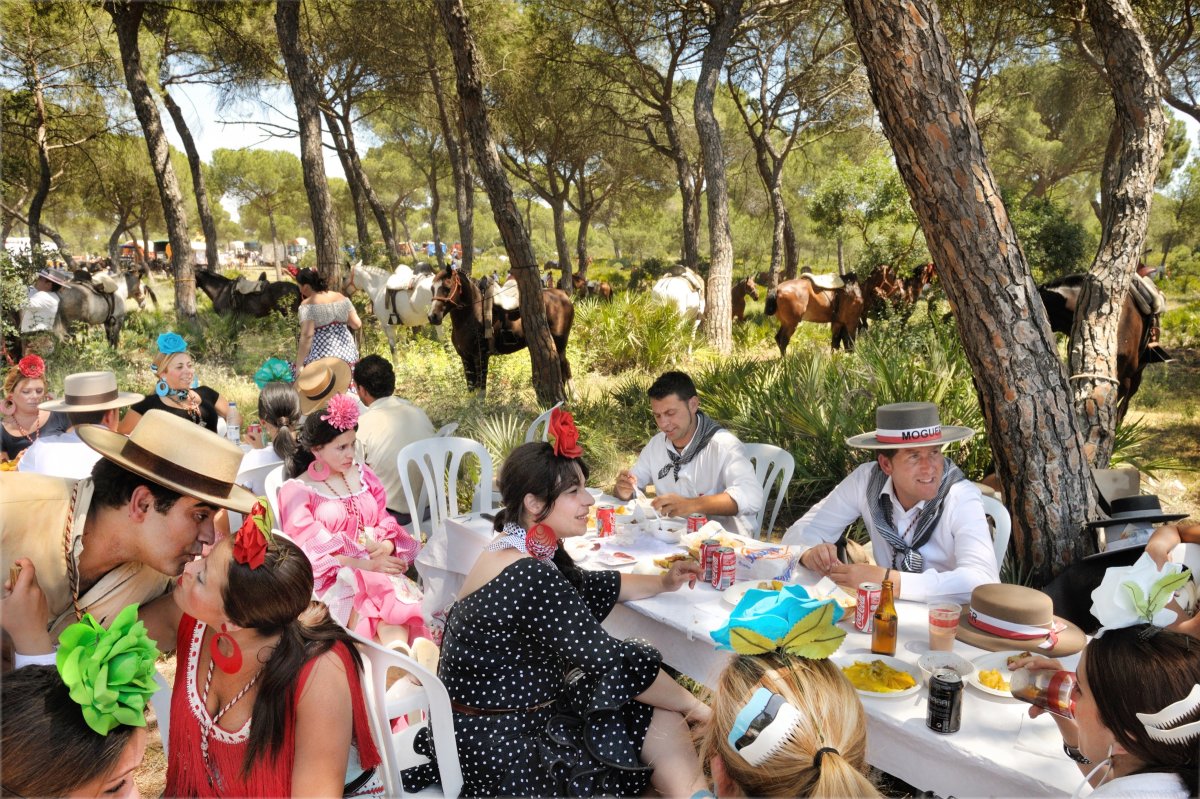
Spain, Camino de Moguer
24.05.2012
Lunch on the way: A clearing in the forest becomes a dining room for 7000 pilgrims.
More about this projectBack to overview
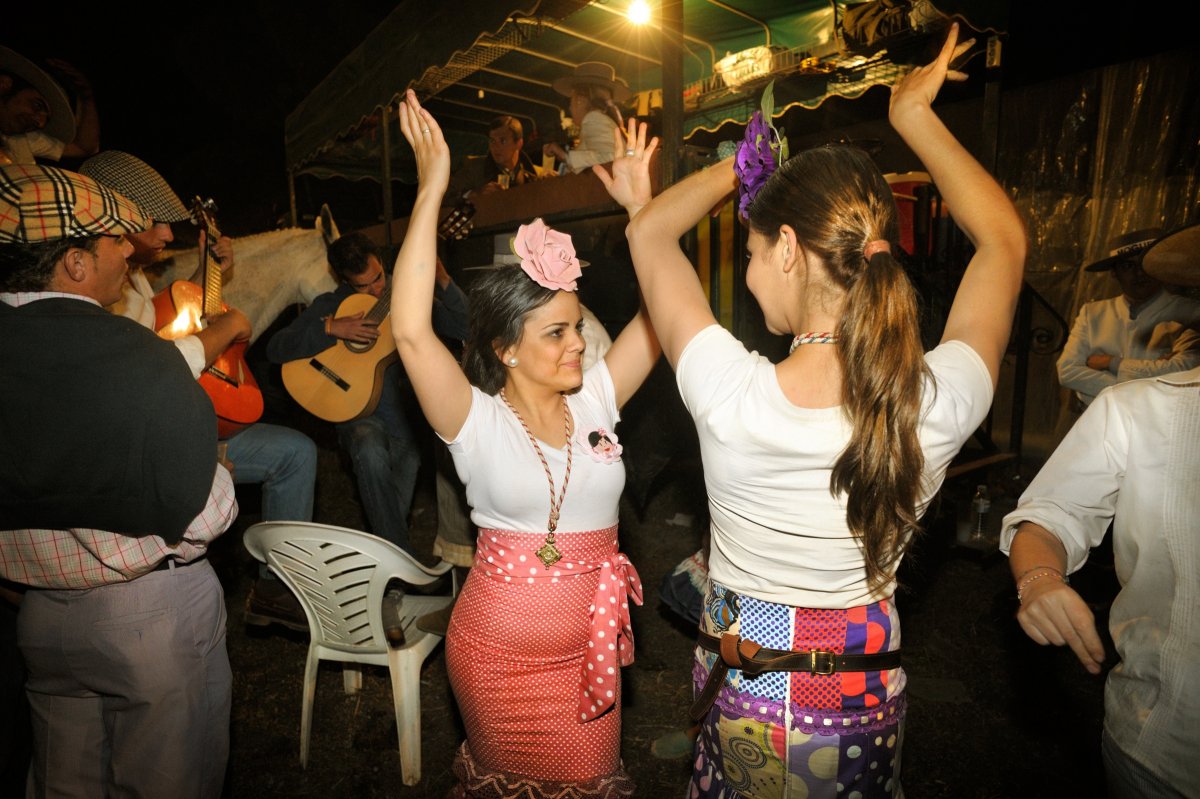
Spain, Camino de Moguer
24.05.2012
Night camp half way to El Rocio. Although they have to leave early the next morning, they dance all night.
More about this projectBack to overview
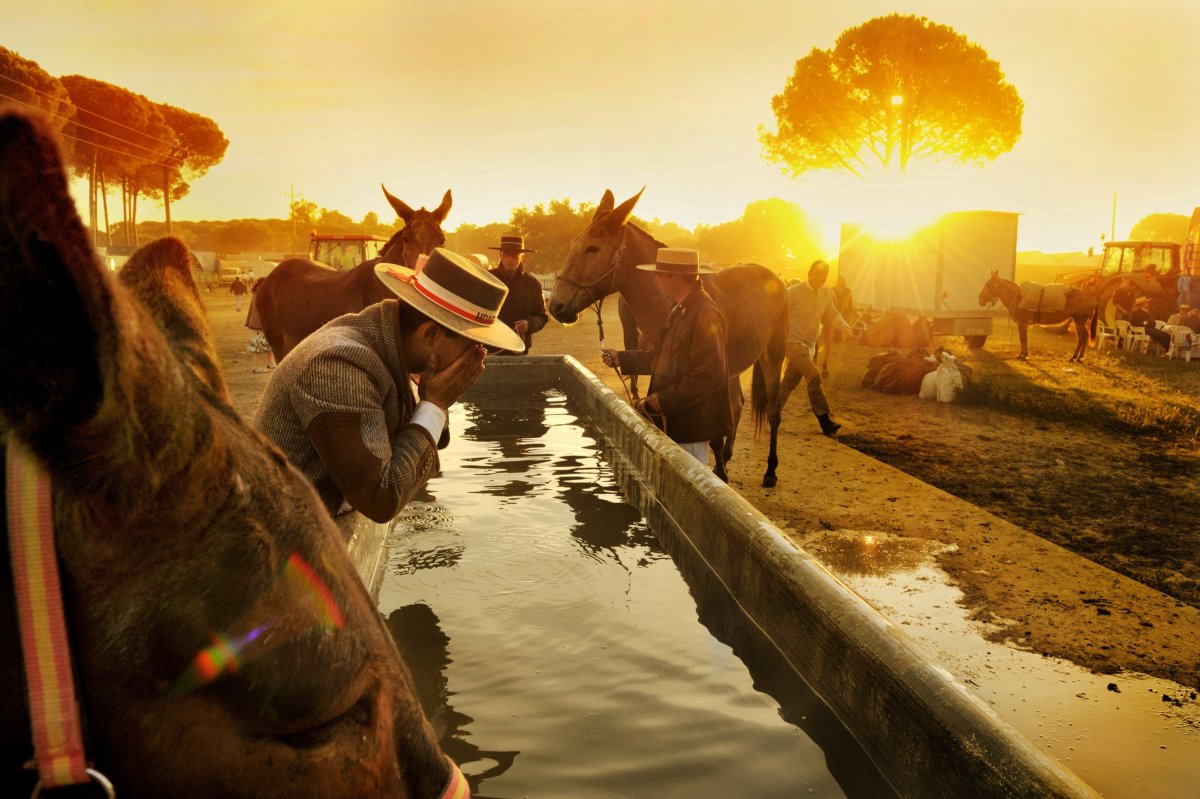
Spain, Camino de Moguer
25.05.2012
Morning toilet at the horse trough. One more day until El Rocio.
More about this projectBack to overview
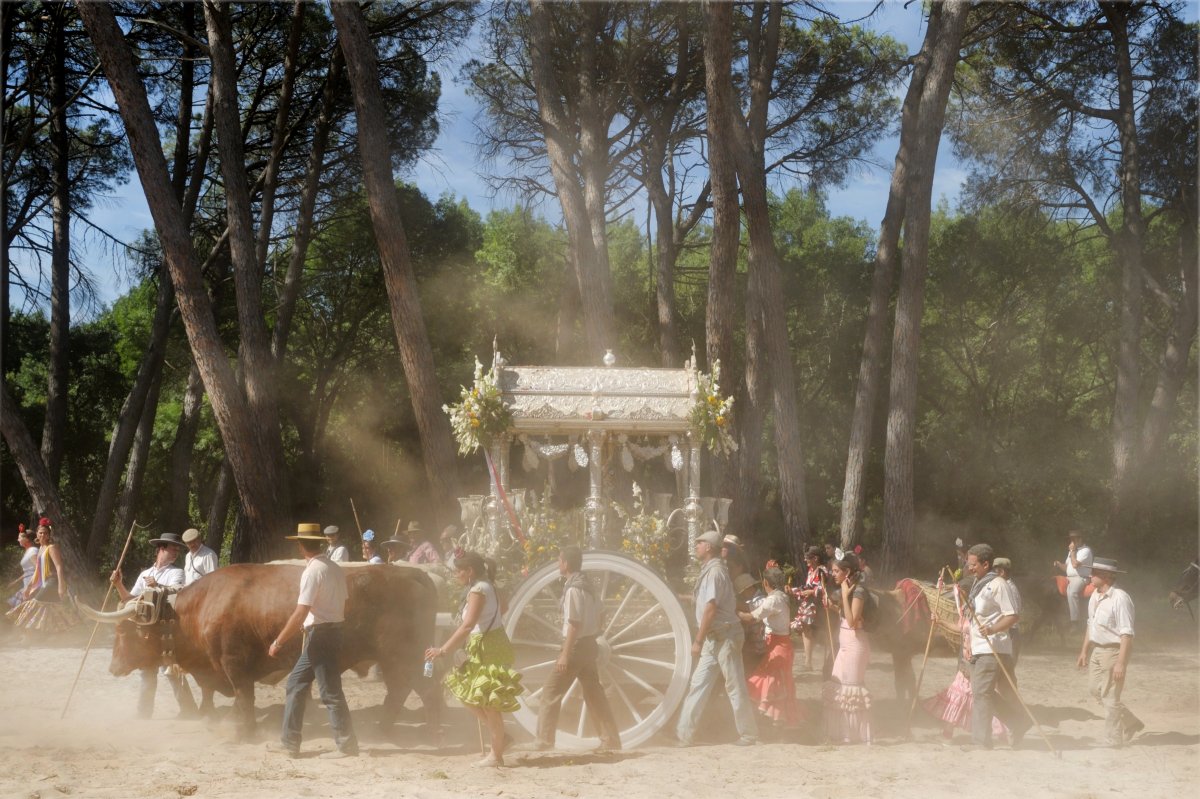
Spain, Camino de Moguer
25.05.2012
Through heat and dust, the journey continues through the sandy plain of the Donaña. The oxen that pull the cart with the image of the Virgin of El Rocio have to be changed along the way.
More about this projectBack to overview
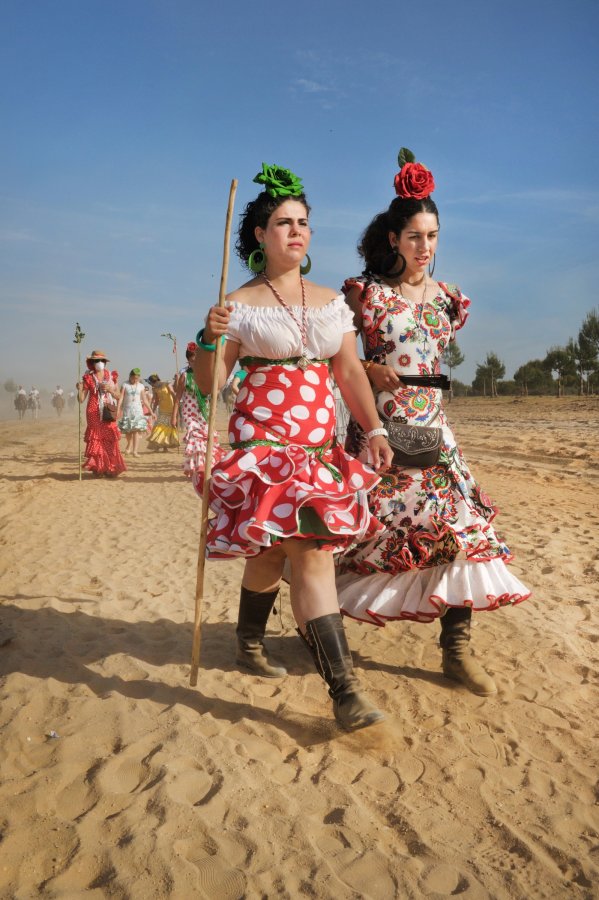
Spain, Camino de Moguer
25.05.2012
Living tradition. The women wear traditional flamenco dresses. Some have sewn in a bag for their mobile phone somewhere between the frills.
More about this projectBack to overview
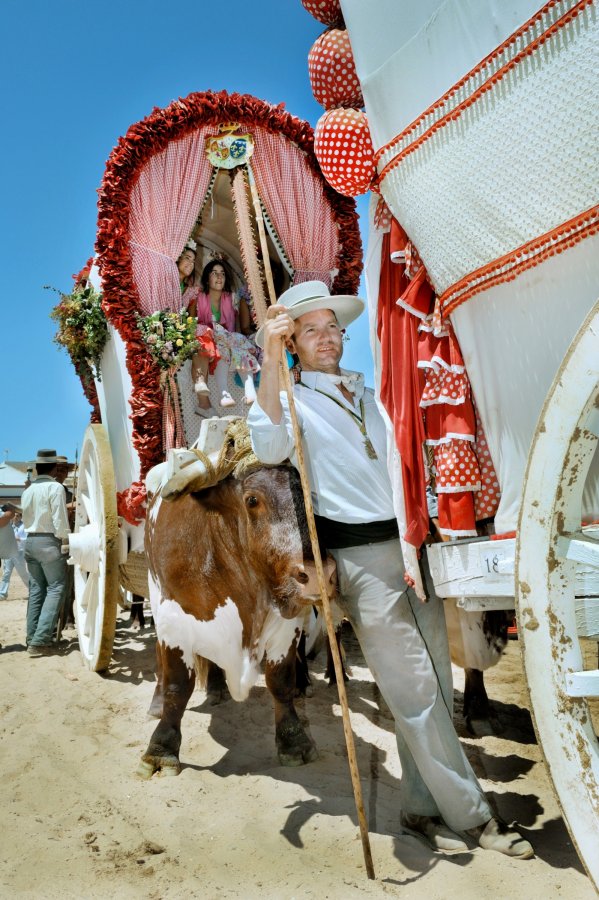
Spain, El Rocio
26.05.2012
The Triana Brotherhood from Seville moves in with its prairie wagons pulled by oxen.
More about this projectBack to overview
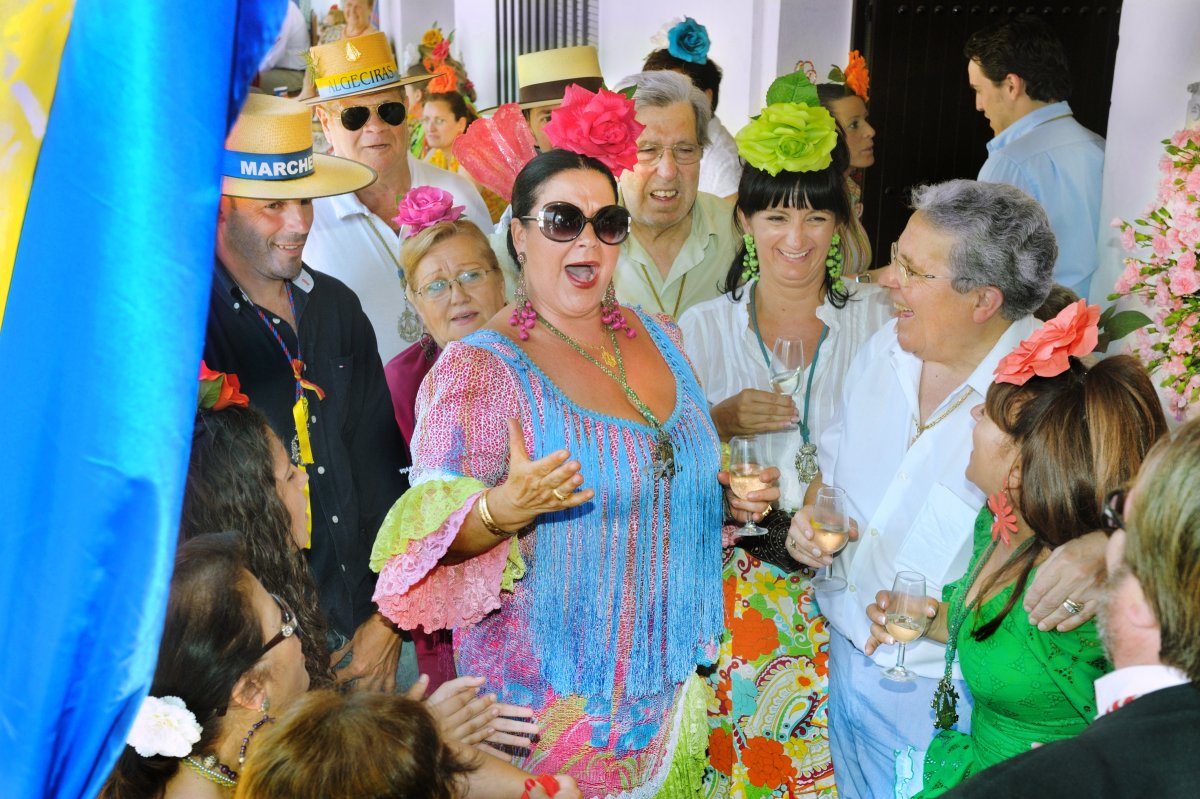
Spain, El Rocio
26.05.2012
With devotion a woman sings the Salida of a Sevilliana, a folk dance from Seville, which is widespread in southern Spain and is counted as flamenco. The folk dance par excellence, in Andalusia, which everyone tries to master from childhood on and performs with great zeal and seriousness at folk festivals.
More about this projectBack to overview
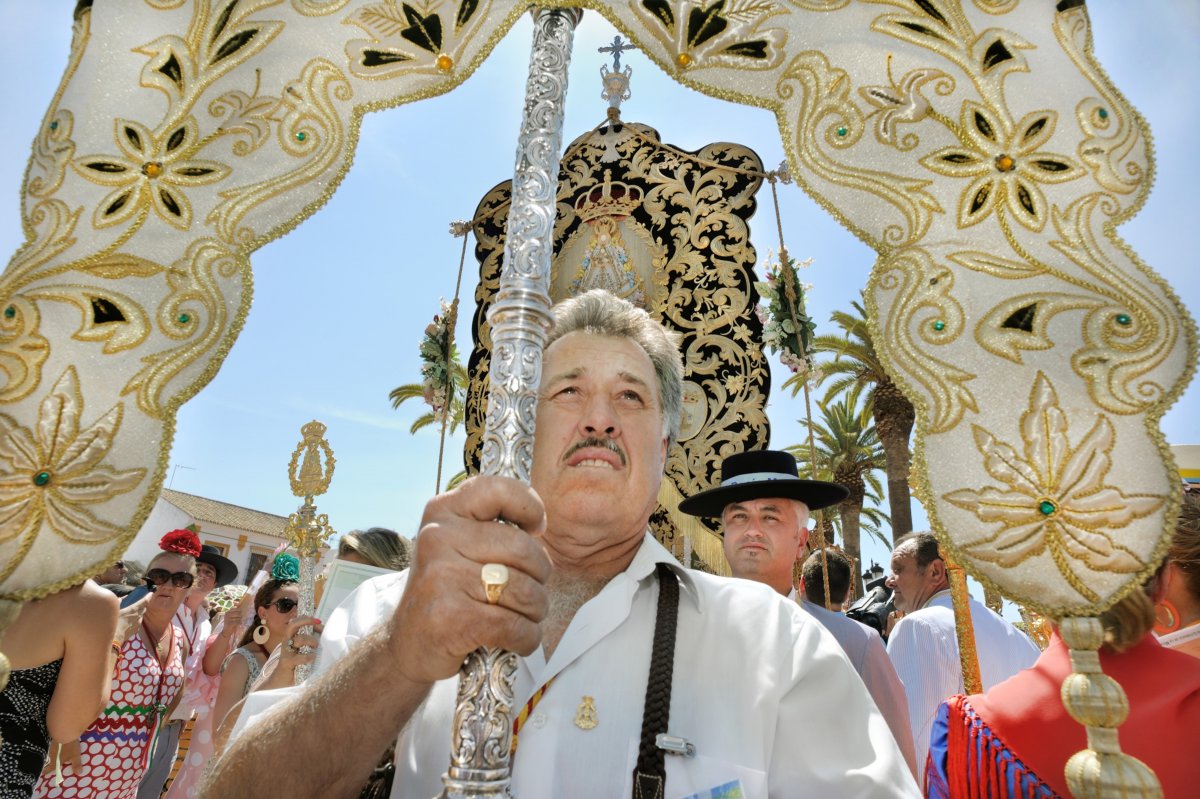
Spain, El Rocio
27.05.2012
At the Sunday Mass with the Bishop, each fraternity is represented with its standard.
More about this projectBack to overview
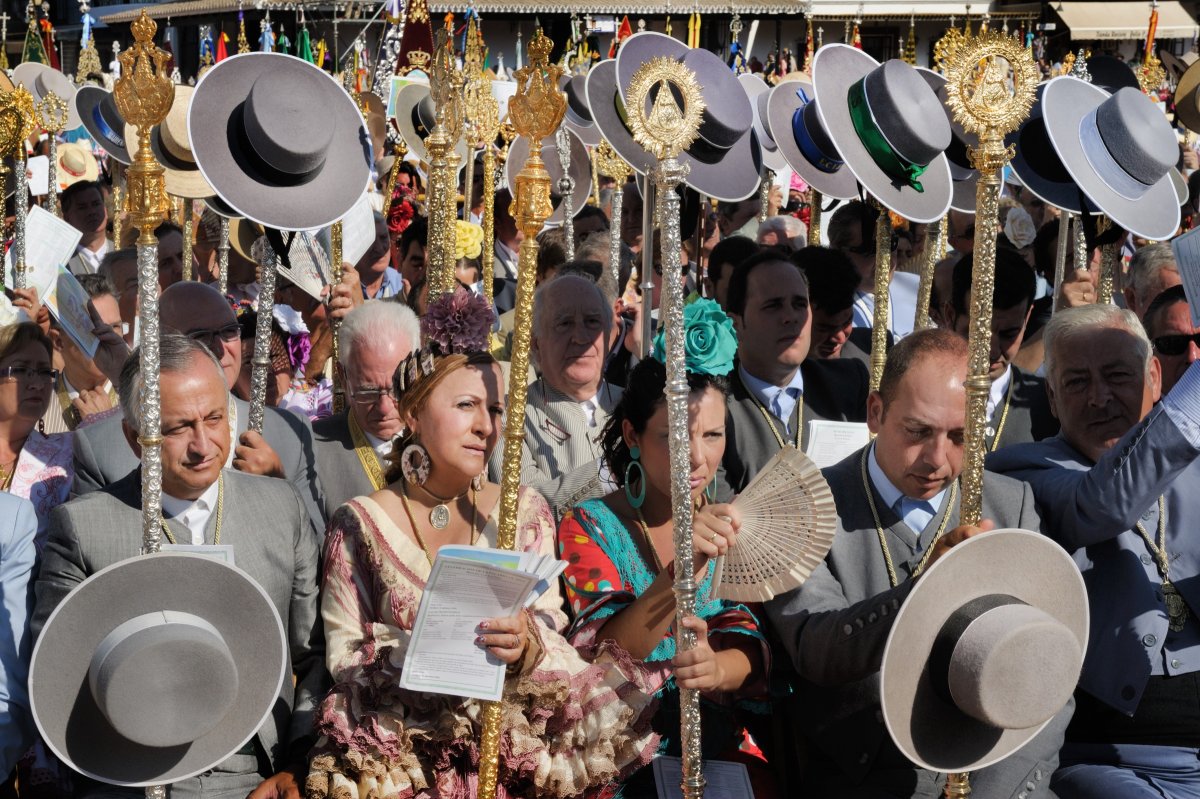
Spain, El Rocio
27.05.2012
Sunday Mass under the sun: the pilgrims await the episcopal blessing, the hats on the staffs offer them a little shade.
More about this projectBack to overview
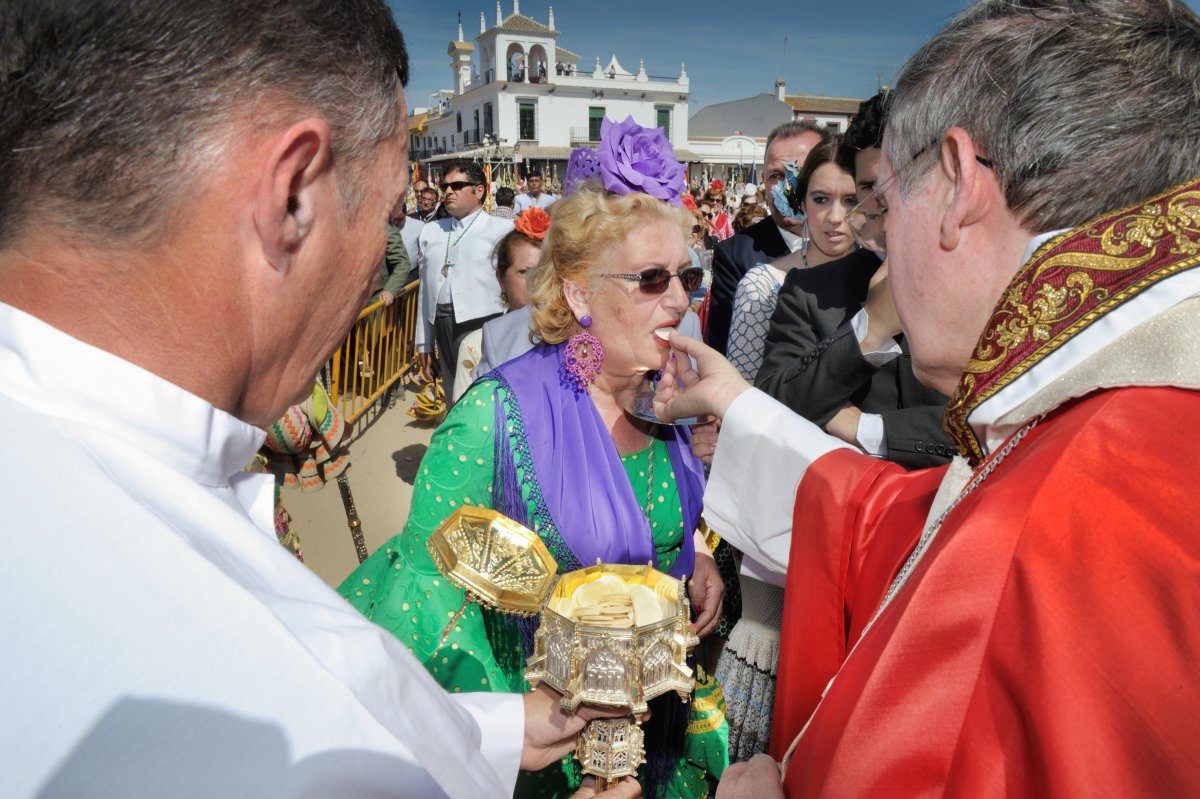
Spanien, El Rocío
27.05.2012
The faithful receive communion after Pentecost Mass.
More about this projectBack to overview
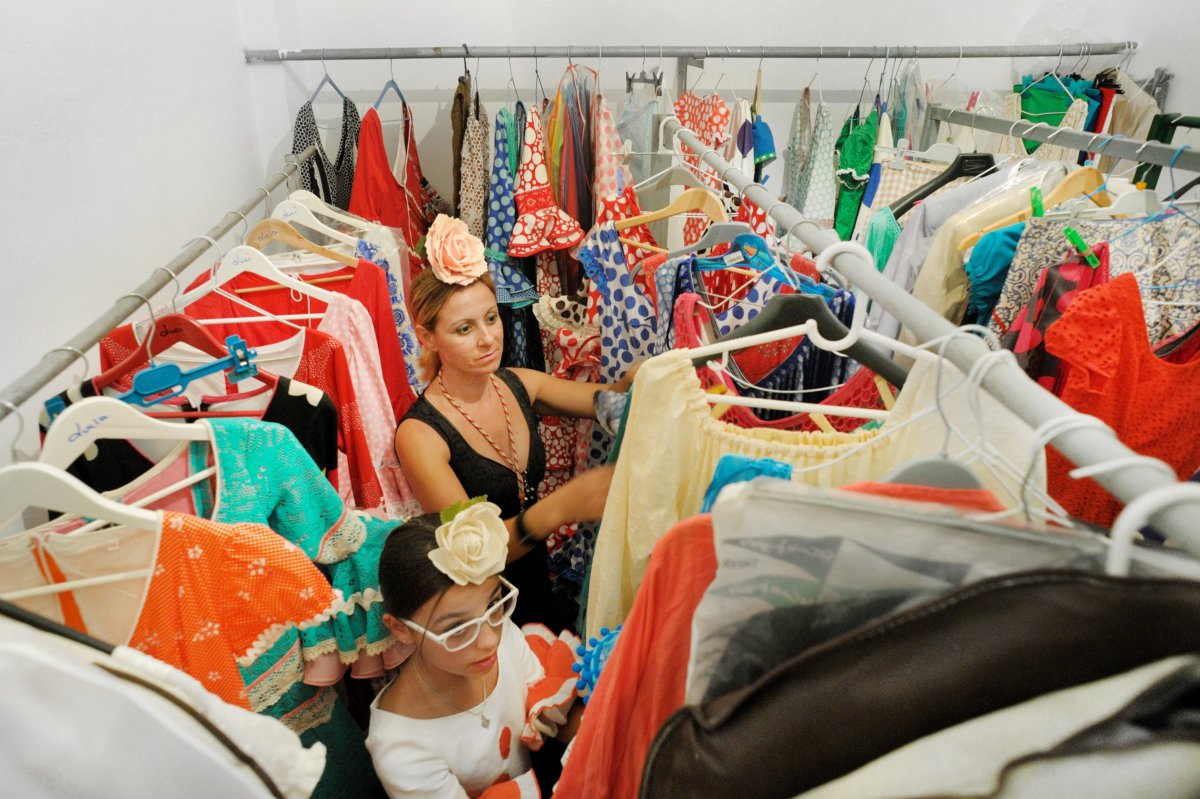
Spain, El Rocio
25.05.2012
Dressing room in the house of the Brotherhood of Moguer. For each day of the pilgrimage, the women carry a new flamenco costume.
More about this projectBack to overview
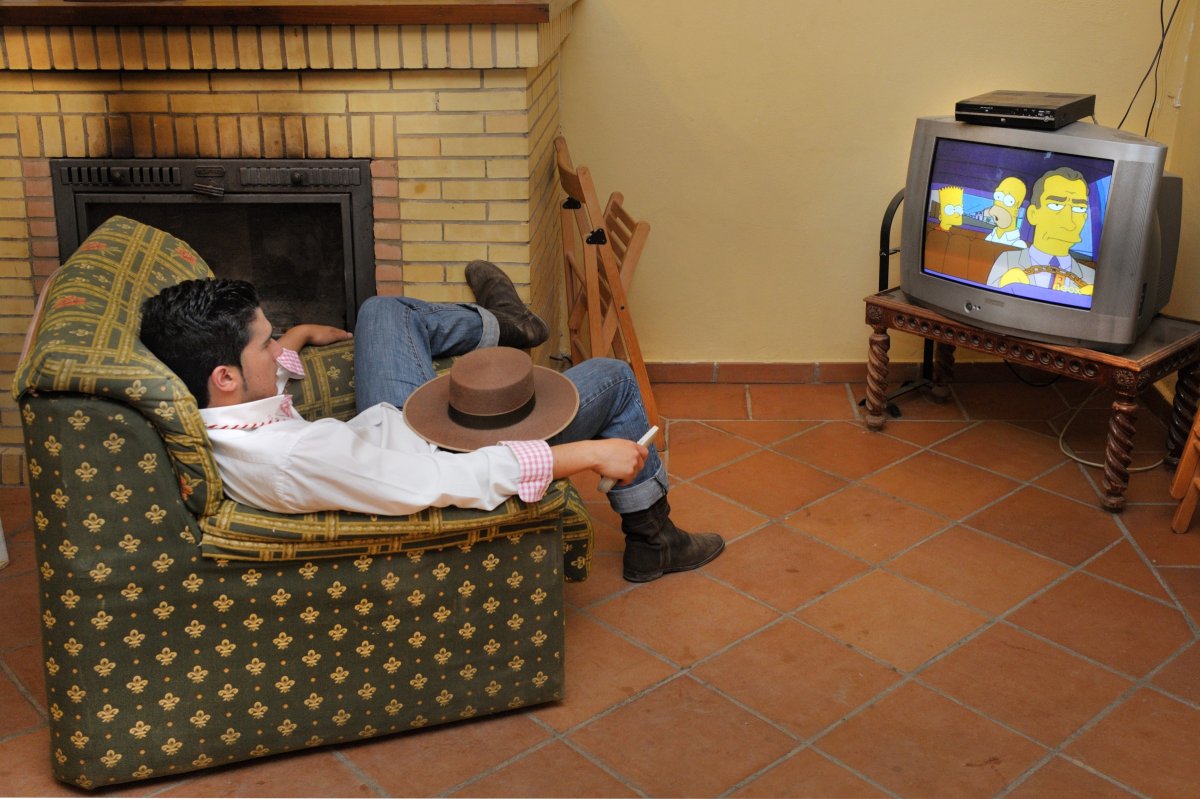
Spain, El Rocio
28.05.2012
For some it is about tradition and faith, for others it is a folk festival. Pilgrims seek distraction from the hustle and bustle, watching Simpsons on TV.
More about this projectBack to overview
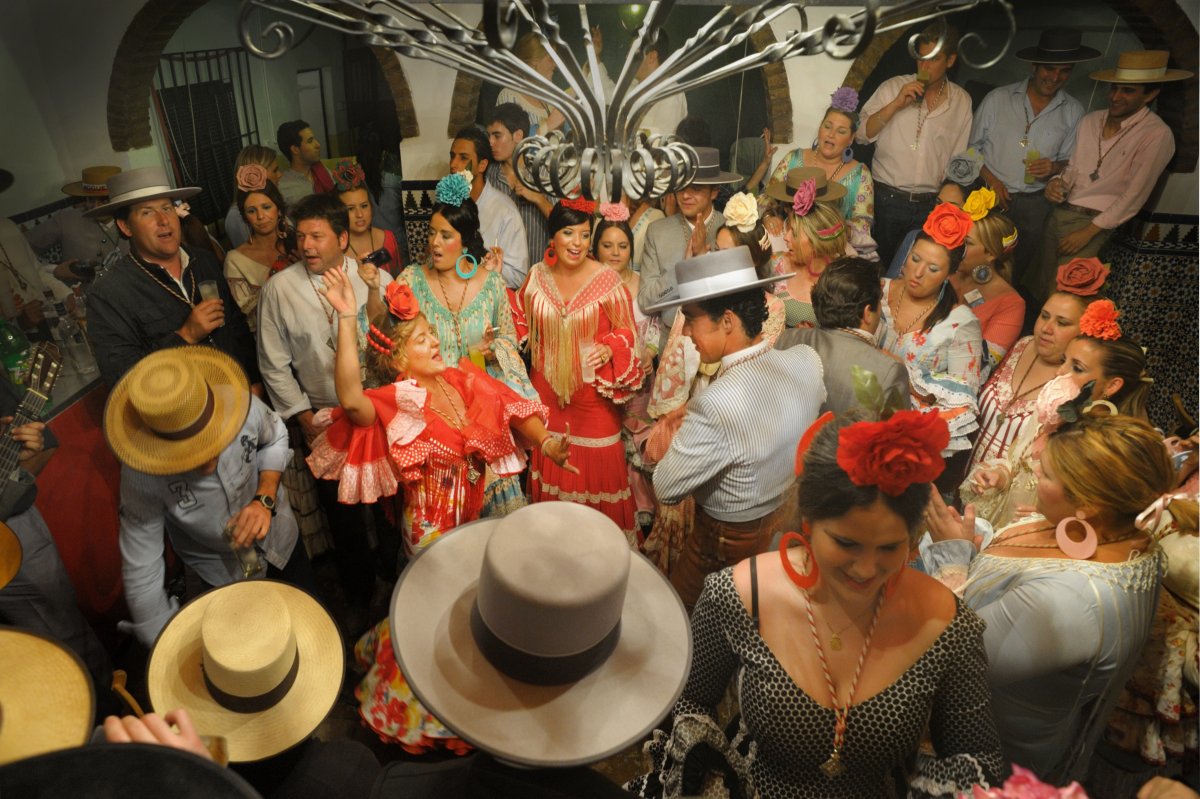
Spain, El Rocio
27.05.2012
On Saturday evening the atmosphere reaches its climax. The traditional Sevillanas are danced and sung. The wine flows like water.
More about this projectBack to overview
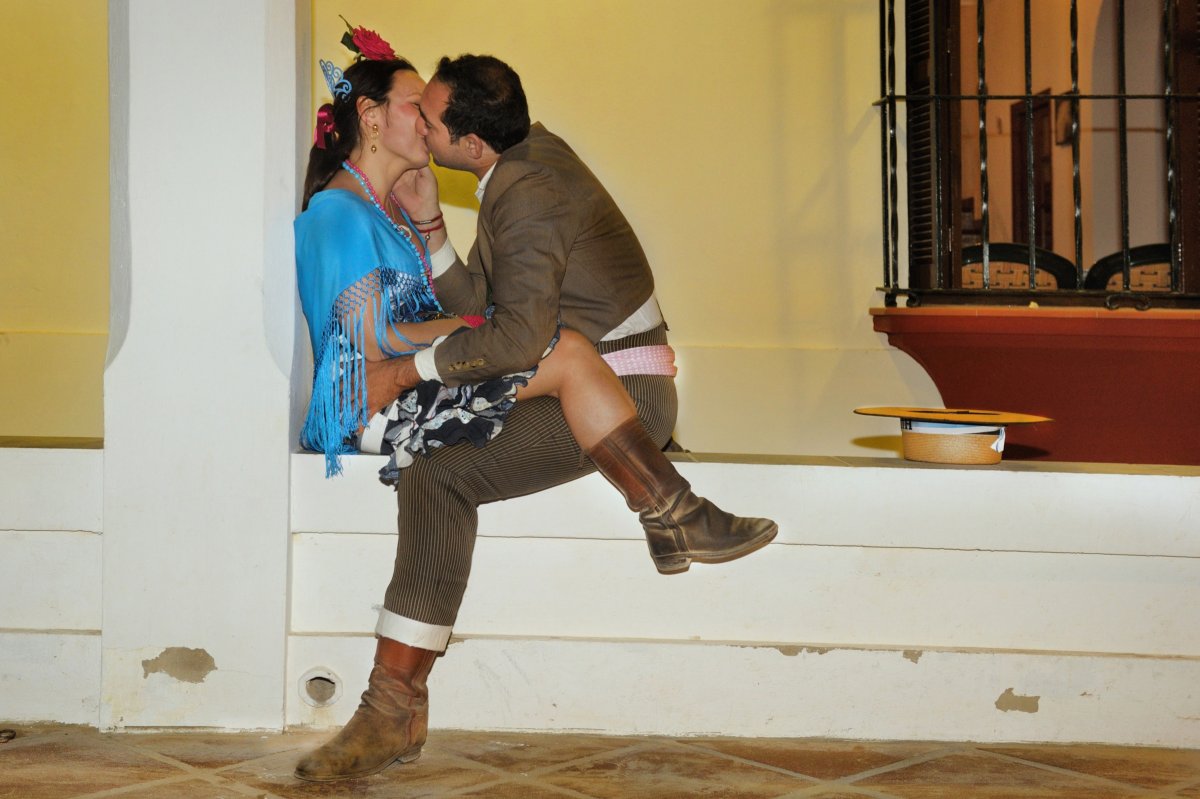
Spain, El Rocio
26.05.2012
Life is celebrated at a thousand parties, on every loggia and even in the smallest courtyard.
More about this projectBack to overview
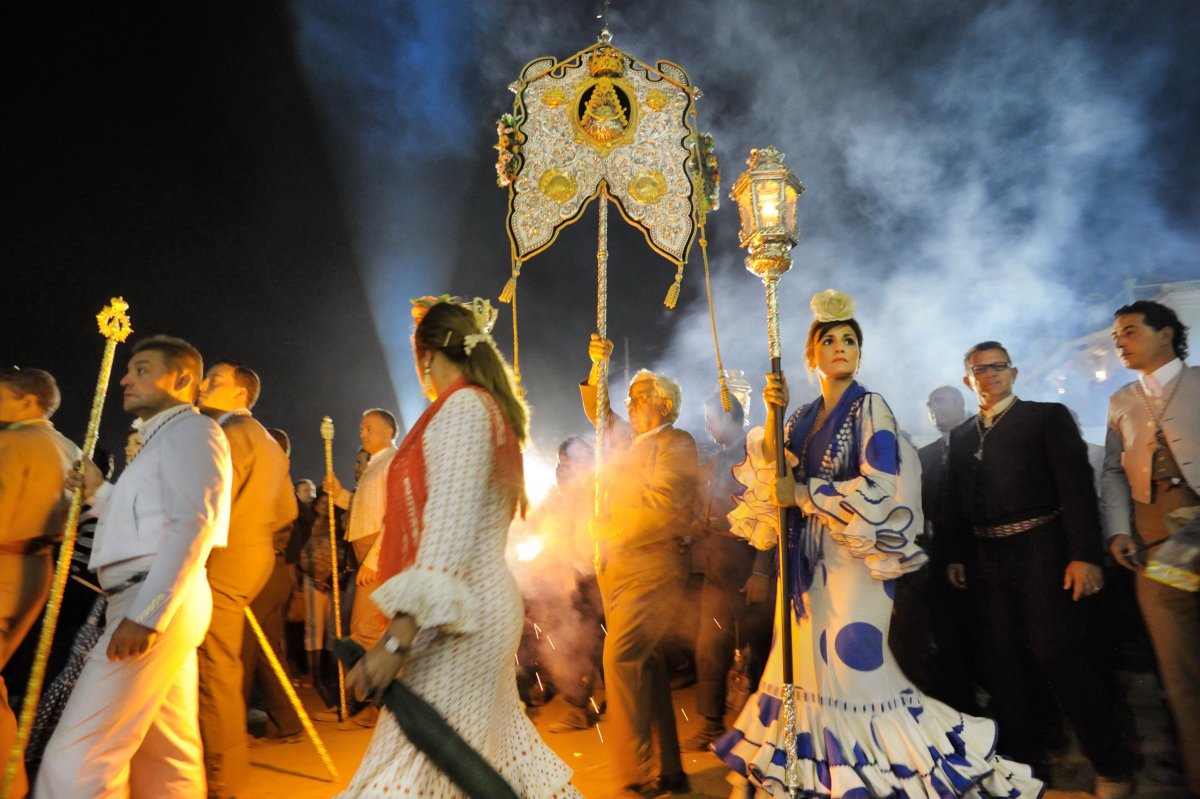
Spain, El Rocio
28.05.2012
On Pentecost Sunday at midnight after the common prayer of the rosary, the brotherhoods with torches pass by the entrance of the church.
More about this projectBack to overview
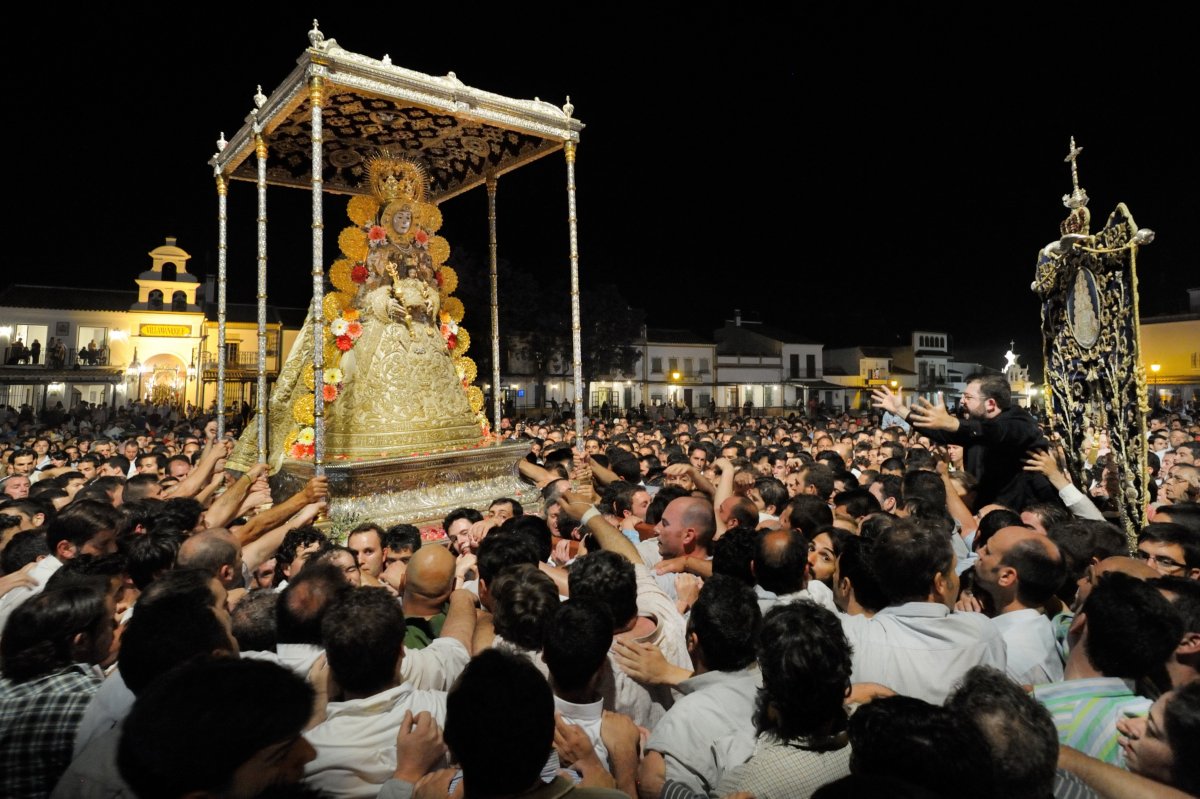
Spain, El Rocio
28.05.2012
The highlight of the pilgrimage. In an incredible crowd, the Virgin is carried through her village by the men from Almonte and 1.5 million believers want to touch her. She is greeted with the standard at the house of each fraternity and priests carried on shoulders offer prayers of thanksgiving and intercessions.
More about this projectBack to overview
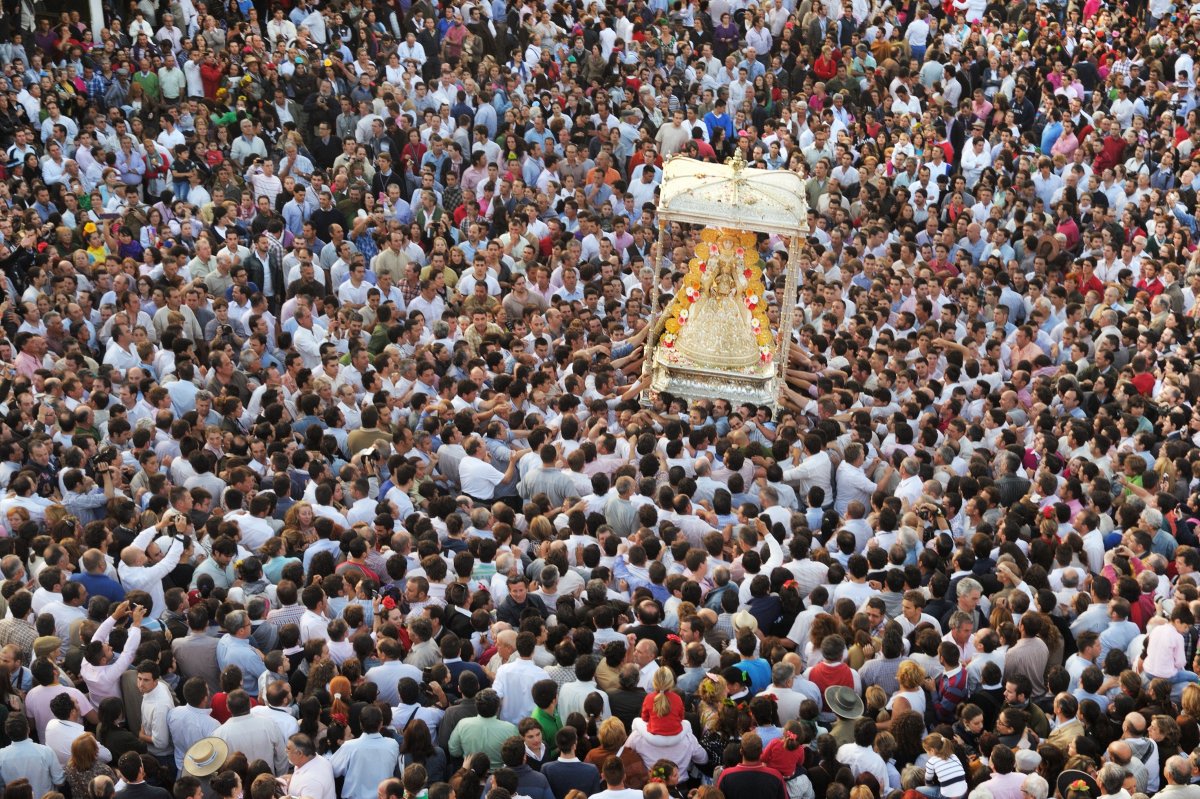
Spain, El Rocio
28.05.2012
Many believers try to touch the virgin or at least her robe or the pedestal, especially the sick and old but also children should receive a special blessing. The porters from Almonte, however, make it very difficult for pilgrims to approach the statue.
More about this projectBack to overview
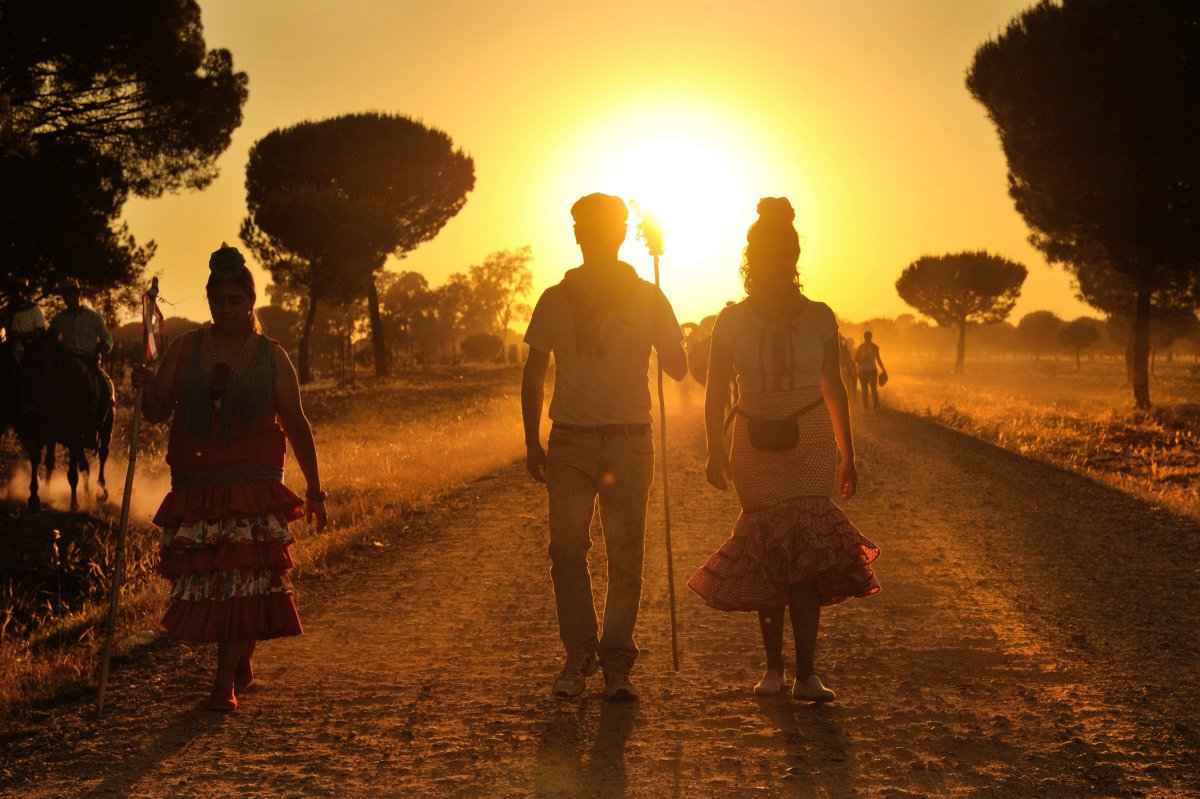
Spain, Camino de Moguer
24.05.2012
The pilgrims on their way back. They bring the blessing of the Virgin of El Rocio to their homes.
More about this projectBack to overview
Pilgrimage to El Rocio
Every year at Pentecost, over a million pilgrims from all over Spain make their way to the Virgin of El Rocío, the Virgin of the Morning Dew, often referred to as Blanca Paloma.
More than 100 fraternities from all over Spain make the pilgrimage to El Rocío on traditional paths, on foot or on horseback. On the Saturday before Pentecost, pilgrims arrive at El Rocío and pass through the Ermita Sanctuary, where they are greeted.
On Pentecost Sunday, the faithful gather at Ermita and in front of it to pray together. Traditionally, at sunrise, members of the Fraternity of Almonte skip the barrier and carry the Blessed Virgin outside. In the midst of the pilgrims, the Blessed Virgin is carried to all the fraternities, where the priests offer prayers of thanksgiving and intercessions for the coming year.
The crowd is indescribable. The faithful, especially the sick and the elderly, try to touch the Virgin, her robe or the pedestal. Children are passed or thrown over the heads of those around them in order to carry out the blessing touch. The porters from Almonte, in their white shirts, make it very difficult for the pilgrims to approach the statue. They consider themselves guardians of the Virgin and form an almost impenetrable circle around the statue. The whole ceremony lasts until around noon, after that the Virgin returns to the church.
From Tuesday after Pentecost, the fraternities start their journey home to bring the blessing of the Virgin Mary to their villages.
El Rocío lives from pilgrimage tourism although it only lasts about 14 days a year. During this time, accommodation or means of transport such as carriages, horses, etc. cost several times what is required for the rest of the year.
We accompanied the pilgrims of the fraternity of Moguer for this report.
